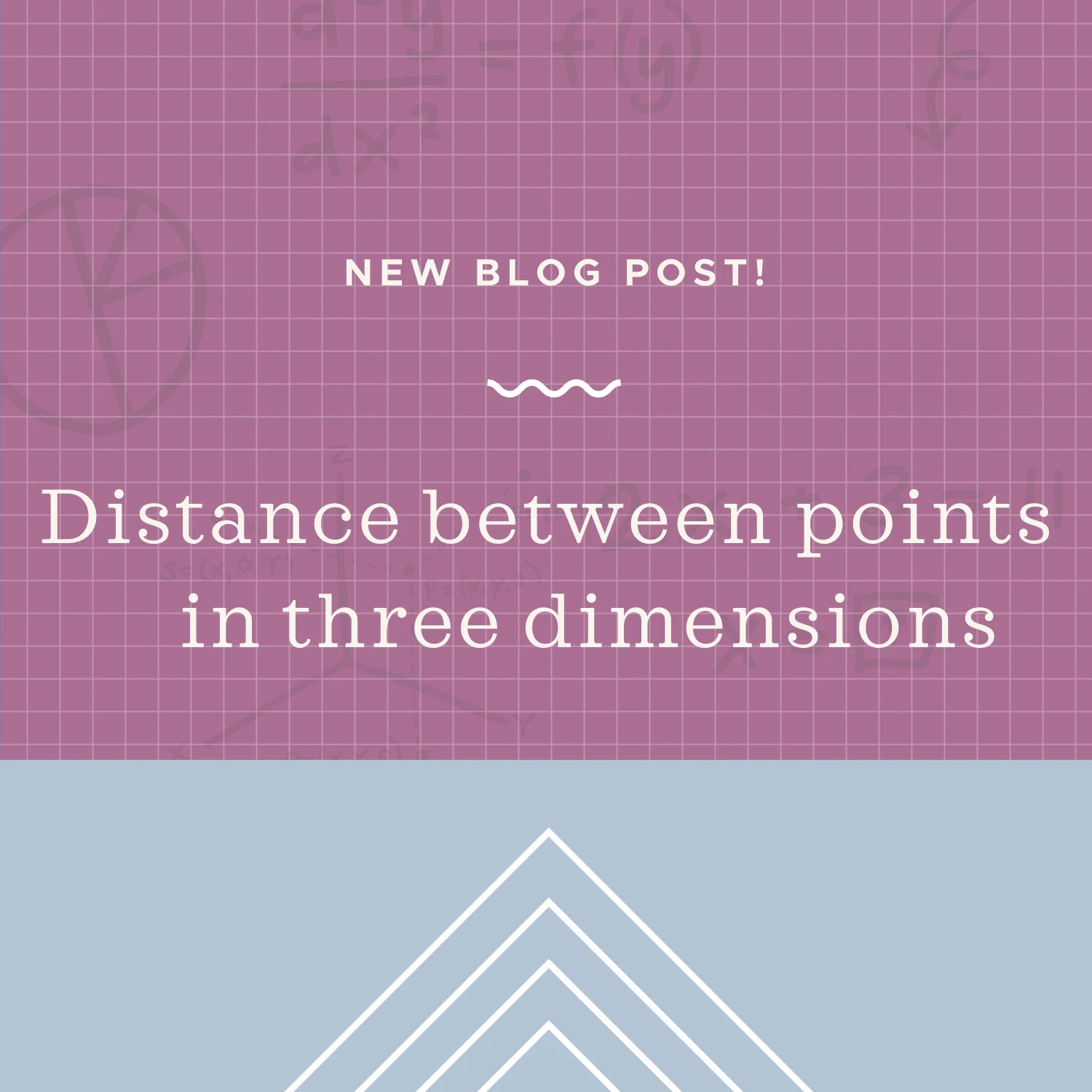To change an iterated integral to polar coordinates we’ll need to convert the function itself, the limits of integration, and the differential. To change the function and limits of integration from rectangular coordinates to polar coordinates, we’ll use the conversion formulas x=rcos(theta), y=rsin(theta), and r^2=x^2+y^2. Remember also that when you convert dA or dy dx to polar coordinates, it converts as dA=dy dx=r dr dtheta.
Read MoreIf we want to find the acute angle between two lines, we can convert the lines to standard vector form and then use the formula cos(theta)=(a•b)/(|a||b|), where a and b are the given vectors, a•b is the dot product of the vectors, |a| is the magnitude of the vector a (its length) and |b| is the magnitude of the vector b (its length).
Read MoreVector, parametric, and symmetric equations are different types of equations that can be used to represent the same line. We use different equations at different times to tell us information about the line, so we need to know how to find all three types of equations.
Read MoreSometimes the easiest way to sketch a three-dimensional curve is to sketch its projections on the xy-, xz-, and yz-coordinate planes. Think about the projections of a curve as the shadows they cast against the coordinate planes.
Read MoreTo change a triple integral into cylindrical coordinates, we’ll need to convert the limits of integration, the function itself, and dV from rectangular coordinates into cylindrical coordinates. The variable z remains, but x will change to rcos(theta), and y will change to rsin(theta). dV will convert to r dz dr d(theta).
Read MoreGreen’s theorem gives us a way to change a line integral into a double integral. If a line integral is particularly difficult to evaluate, then using Green’s theorem to change it to a double integral might be a good way to approach the problem.
Read MoreTo determine whether two lines are parallel, intersecting, skew, or perpendicular, we’ll test first to see if the lines are parallel. If they aren’t parallel, then we test to see whether they’re intersecting. If they’re intersecting, then we test to see whether they are perpendicular, specifically. If they’re not intersecting, we skip the test for perpendicularity, and then we test for skewness.
Read MoreIterated integrals are double or triple integrals whose limits of integration are already specified. In this lesson, we’ll look at how to evaluate triple iterated integrals by working from the inside toward the outside.
Read MoreGiven two points A and B in three-dimensional space, we can calculate the distance between them using the distance formula. It doesn’t matter which point is A and which point is B. The fact that we square the differences inside the square root means that all of our values will be positive, which means we’ll get a positive value for the distance between the points.
Read MoreWe already know how to find critical points of a multivariable function and use the second derivative test to classify those critical points. But sometimes we’re asked to find and classify the critical points of a multivariable function that’s subject to a secondary constraint equation.
Read MoreTo find the scalar equation of a line, we’ll use the formulas x=x_0+at, y=y_0+bt, and z=z_0+ct, where P_0(x_0,y_0,z_0) is a given point and v=(a,b,c) is the given vector. The vector may also be in the format v=ai+bj+ck.
Read MoreWe say that two vectors a and b are orthogonal if they are perpendicular (their dot product is 0), parallel if they point in exactly the same or opposite directions, and never cross each other, otherwise, they are neither orthogonal or parallel. Since it’s easy to take a dot product, it’s a good idea to get in the habit of testing the vectors to see whether they’re orthogonal, and then if they’re not, testing to see whether they’re parallel.
Read MoreWhen we’re given two vectors with the same initial point, and they’re different lengths and pointing in different directions, we can think about each of them as a force. The longer the vector, the more force it pulls in its direction.
Oftentimes we want to be able to find the net force of the two vectors, which will be a third vector that counterbalances the force and direction of the other two. Think about the resultant vector as representing the amount of force and the direction in which you’d have to pull to cancel out the force from the other two vectors.
Read MoreAt any given point along a curve, we can find the acceleration vector ‘a’ that represents acceleration at that point. If we find the unit tangent vector T and the unit normal vector N at the same point, then the tangential component of acceleration a_T and the normal component of acceleration a_N are shown in the diagram below.
Read MoreSometimes we need to find partial derivatives for functions with three or more variables, and we’ll do it the same way we found partial derivatives for functions in two variables. We’ll take the derivative of the function with respect to each variable separately, which means we’ll end up with one partial derivative for each of our variables. When we take the derivative with respect to one variable, we’ll treat all the other variables as constants.
Read MoreIn order to use the triple integral average value formula, we’ll have find the volume of the object, plus the domain of x, y, and z so that we can set limits of integration, turn the triple integral into an iterated integral, and replace dV with dzdydx.
Read MoreIn the past, we used midpoint rule to estimate the area under a single variable function. We’d draw rectangles under the curve so that the midpoint at the top of each rectangle touched the graph of the function. Then we’d add the area of each rectangle together to find an approximation of the area under the curve. When we translate this into three-dimensional space, it means that we use three-dimensional rectangular prisms, instead of two-dimensional rectangles, to approximate the volume under a multivariable function.
Read MoreThe directional derivative of a multivariable function takes into account the direction (given by the unit vector u) as well as the partial derivatives of the function with respect to each of the variables.
Read More



















